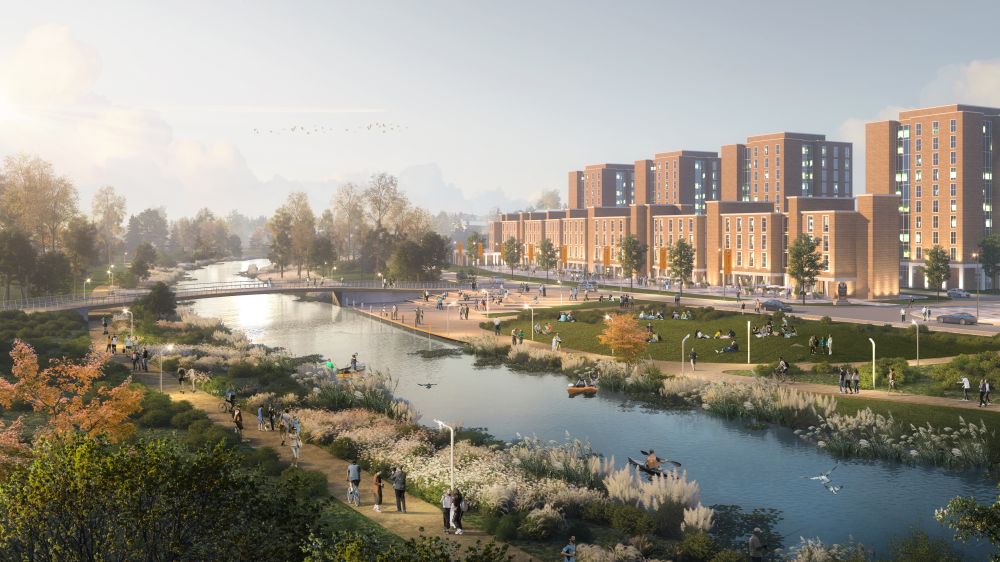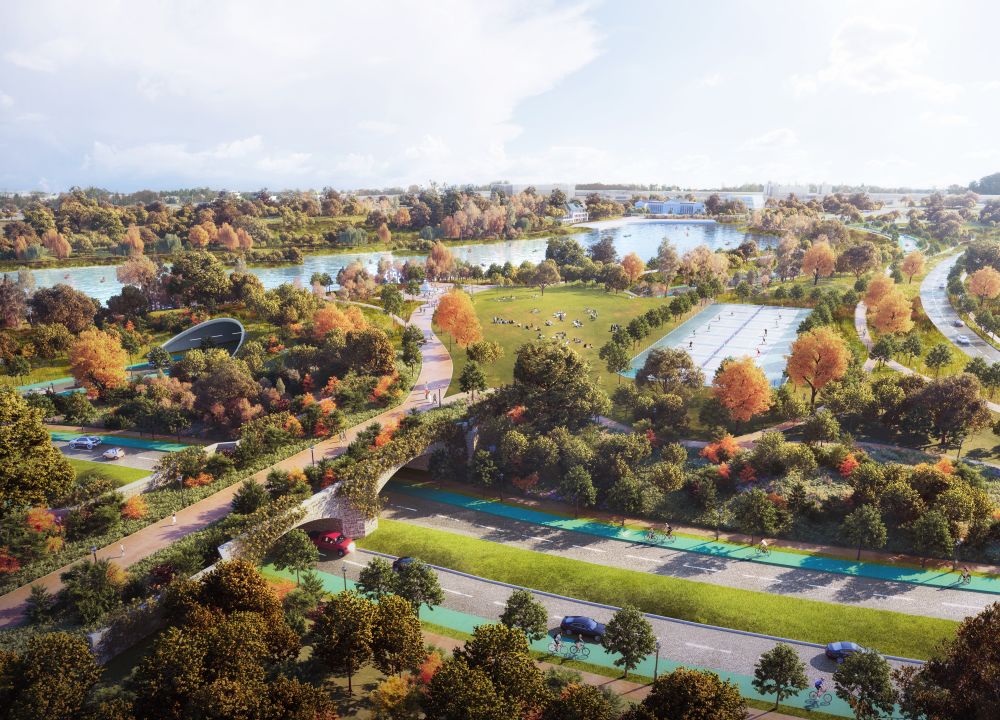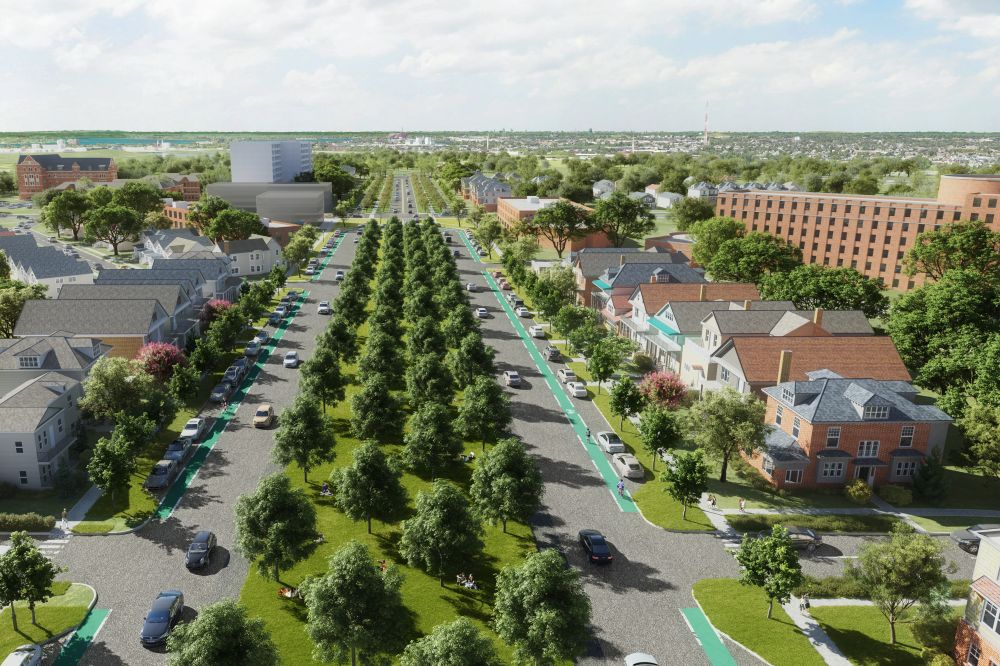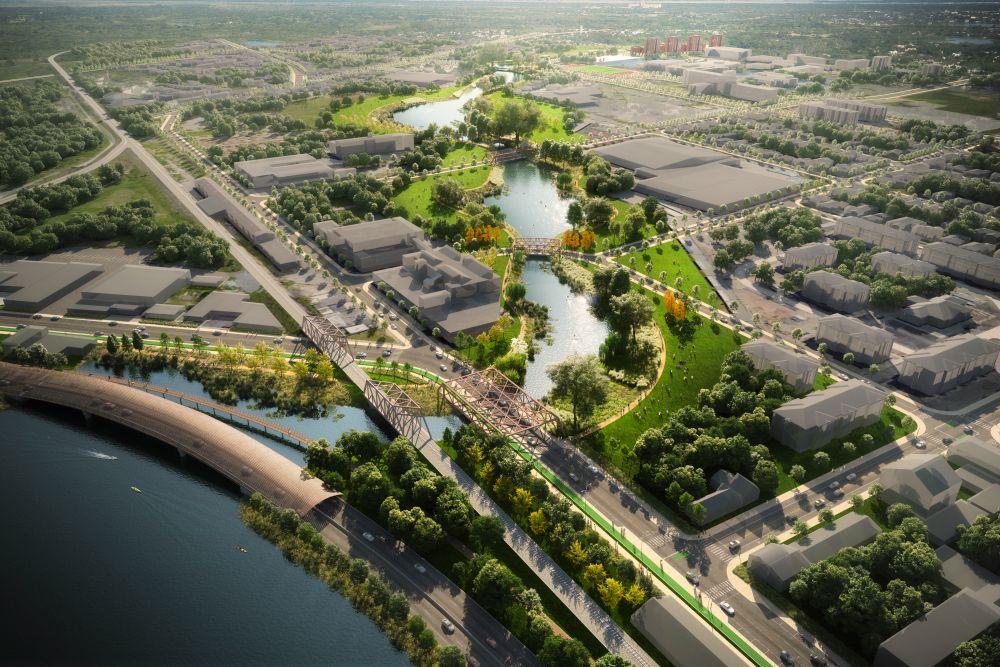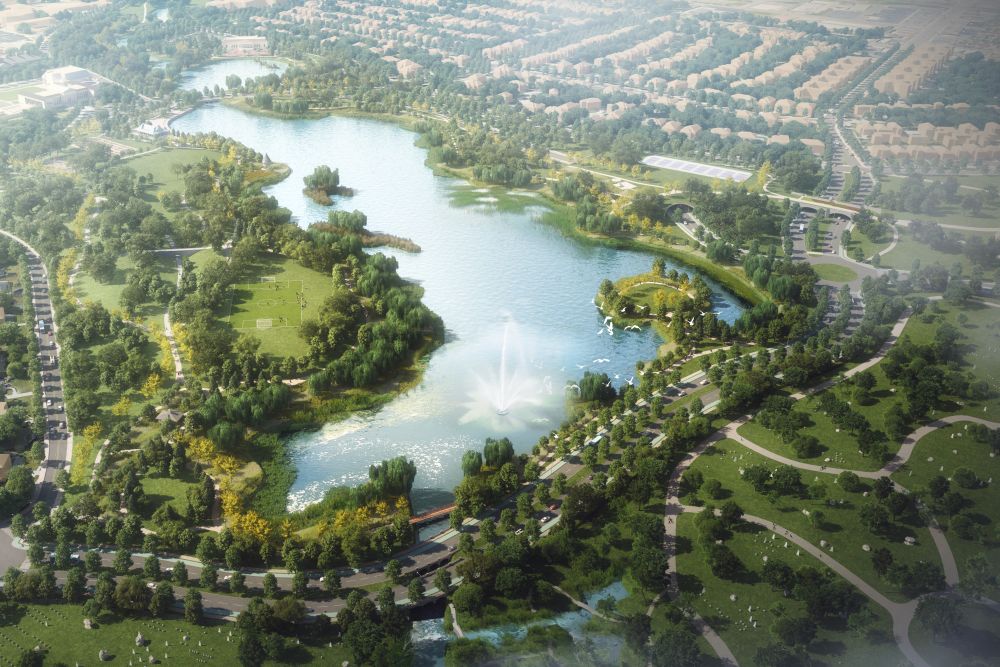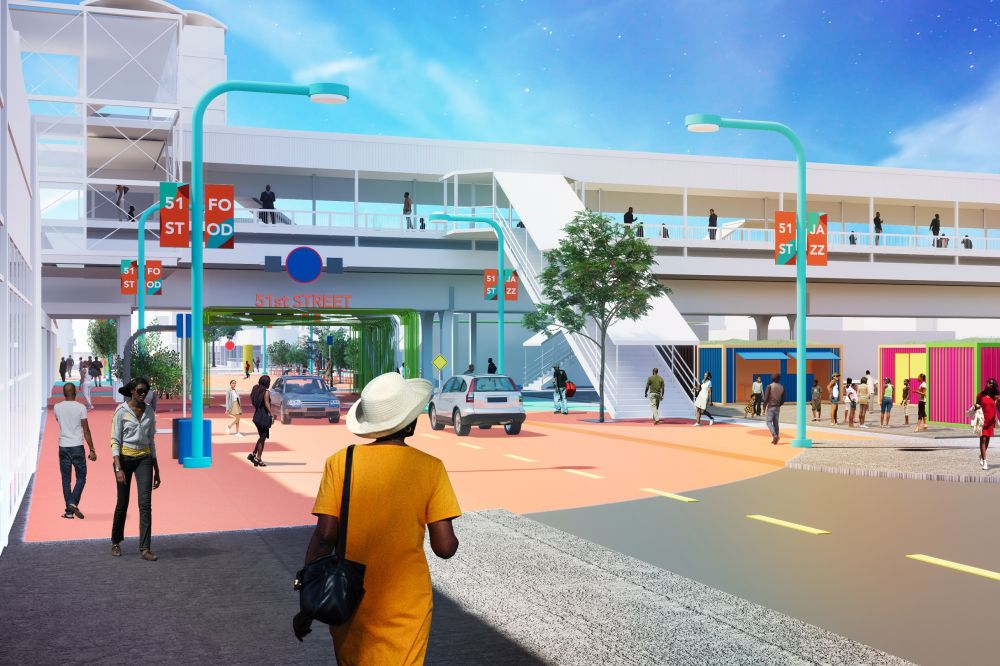Why two architects are optimistic about Buffalo's Scajaquada Corridor
Danielle Larrabee
May 12, 2021
Social Sharing
22 years. For 22 years the Buffalo community has advocated for change to the Scajaquada Corridor where mistakes were made, communities were divided and tragedies occurred.
CannonDeisgn architect Michael DeLuca has been a central voice during 13 of those years, whose activism to improve the corridor is rooted in addressing the larger challenges through the broader ecosystems of safety, equity and public health. Another CannonDeisgn architect, Mark Nowaczyk, has played a key role more recently as part of the Scajaquada Corridor Coalition’s design committee—bringing long-awaited plans and visions to life through new renderings images showing what could be.
Sitting down with both architects, I was struck by their genuine optimism for the corridor’s future. As a former city of Buffalo resident who still works downtown, has driven the 198 expressway hundreds of times, and has volunteered to pick up trash along the stinky, polluted Scajaquada Creek, I’ve heard so much talk over the years to improve this area with very little action taken.
Turns out, DeLuca and many other volunteers were hard at work, behind the scenes, quietly but systematically building a vision through community input.
Testimonials
And it wasn’t just the Parkside Community Association having these conversations. Organizations across Buffalo were also sharing their input as well, including Buffalo Olmsted Parks Conservancy, Restore Our Community Coalition, GObike Buffalo, Buffalo Niagara Waterkeeper, Vision Niagara, SUNY Buffalo State, Grant Amherst Business Association and Black Rock Riverside Alliance. With similar visions and the need to have one, strong voice to stand up to the powers-that-be to enact real change, these organizations came together to form the Scajaquada Corridor Coalition (SCC) in 2015. The SCC gathers all of the other stakeholder organizations in order to have one, unifying community vision for a “revitalized Scajaquada Creek, a connected Delaware Park, and a restored Humboldt Parkway.” DeLuca was one of its founding members.
Tragically, in 2015, a vehicle traveling westbound on the 198 careened off the road, killing a three-year-old boy and seriously injuring his sister as they were walking home from soccer with their mother on the ring Road in Delaware Park. That terrible event was the impetus of the reduced speed limit and extra safety measures put in place around Delaware Park.
“This heartbreak marked a shift in both public awareness and state-wide attention to the massive shortcomings of this road system,” DeLuca said.
A few years later, the New York State Department of Transportation (DOT) proposed changes to the 198 and was met with fierce community backlash.
DeLuca and the SCC were unimpressed with the plan. “The DOT’s proposal fell short in so many ways,” he explained. “They were trying to push a plan through that would instate a speed limit of 45mph and only focused on traffic patterns. They largely ignored all of the larger challenges we have worked so hard to try and address.”
Fast forward to today. Both DeLuca and Nowaczyk are active members of the SCC. After the failed DOT plan, New York State designated The Greater Buffalo-Niagara Regional Transportation Council (GBRNTC), a regional transportation organization, to lead the planning process, and it expects to begin meeting with the public in June and develop a final plan by March 2022. The plan is for GBNRTC to perform a robust community outreach that will incorporate the past and ongoing efforts of the SCC to come up with a comprehensive plan and design that will have wide community support.
Recently, the SCC produced new renderings that tell the story of what the corridor could look like with a comprehensive approach. You can view them all here. For me, these renderings are a bold statement that has yet to be seen in this process: a restored Scajaquada Creek where families are enjoying an afternoon kayak paddle, a stunning, tree-lined Humboldt Parkway, and a fully-connected Delaware Park. Nowaczyk and many others on the design committee used their design talents to make a long-awaited vision come to life.
“Working on the SCC’s design committee to gather 22 years of community input and create these stunning renderings is just another step in the right direction,” Nowaczyk said. “We can finally see the tide turning.”
During our talk, I could not help but ask, “why now?” Why does progress seem to finally be happening now after all these years? The architects pointed to a few factors. They noted the $100 million of state funds already allocated to the project and new federal infrastructure funds geared towards removing highways that divide communities. They also have seen yet another shift of public opinion since the pandemic began—fewer people are making a daily commute, so traffic has decreased. Therefore, there is less of a need for major, disruptive expressways to get in and out of downtown as quickly as possible.
“The light is brighter than it has ever been,” said Deluca. “We look forward to continuing this vital community project and to see it finally be realized.”
